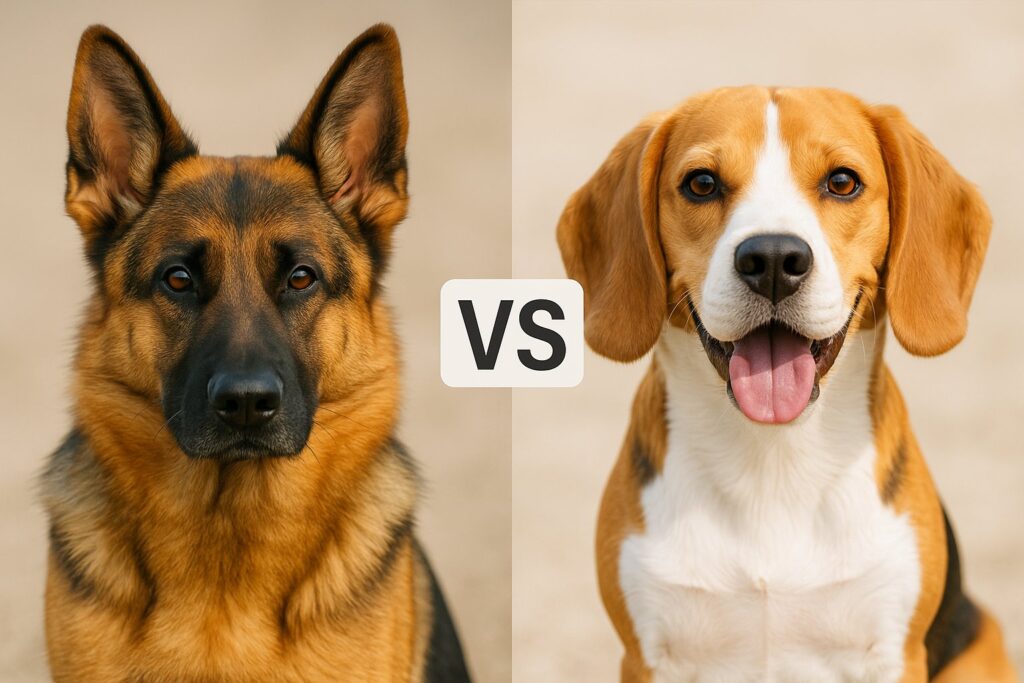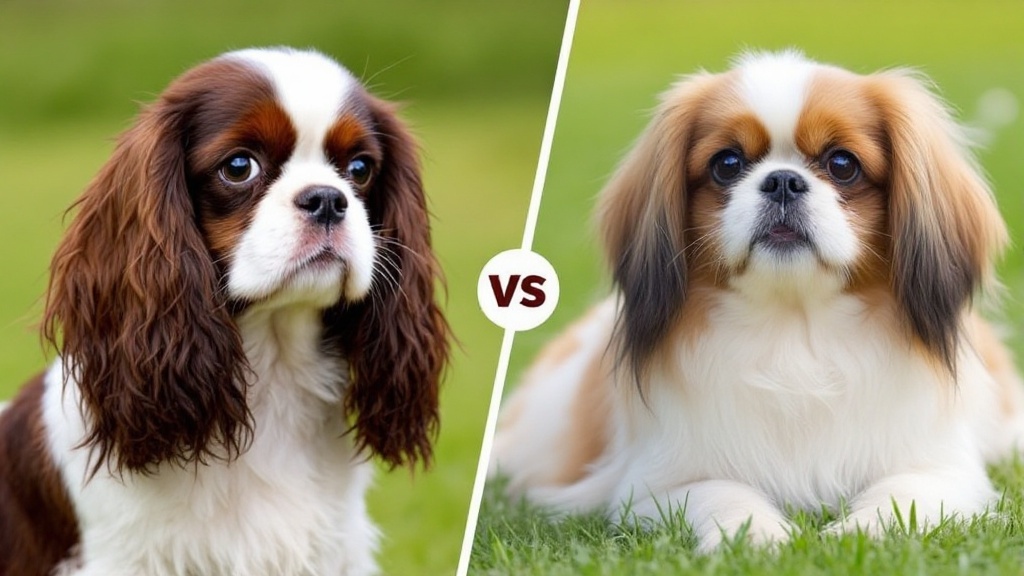Are you stuck between a German Shepherd and a Beagle for your next pet? German Shepherds are famous for loyalty and intelligence, while Beagles have a reputation for being friendly and outgoing.
These two breeds are both popular, but their personalities, needs, and looks couldn’t be more different.
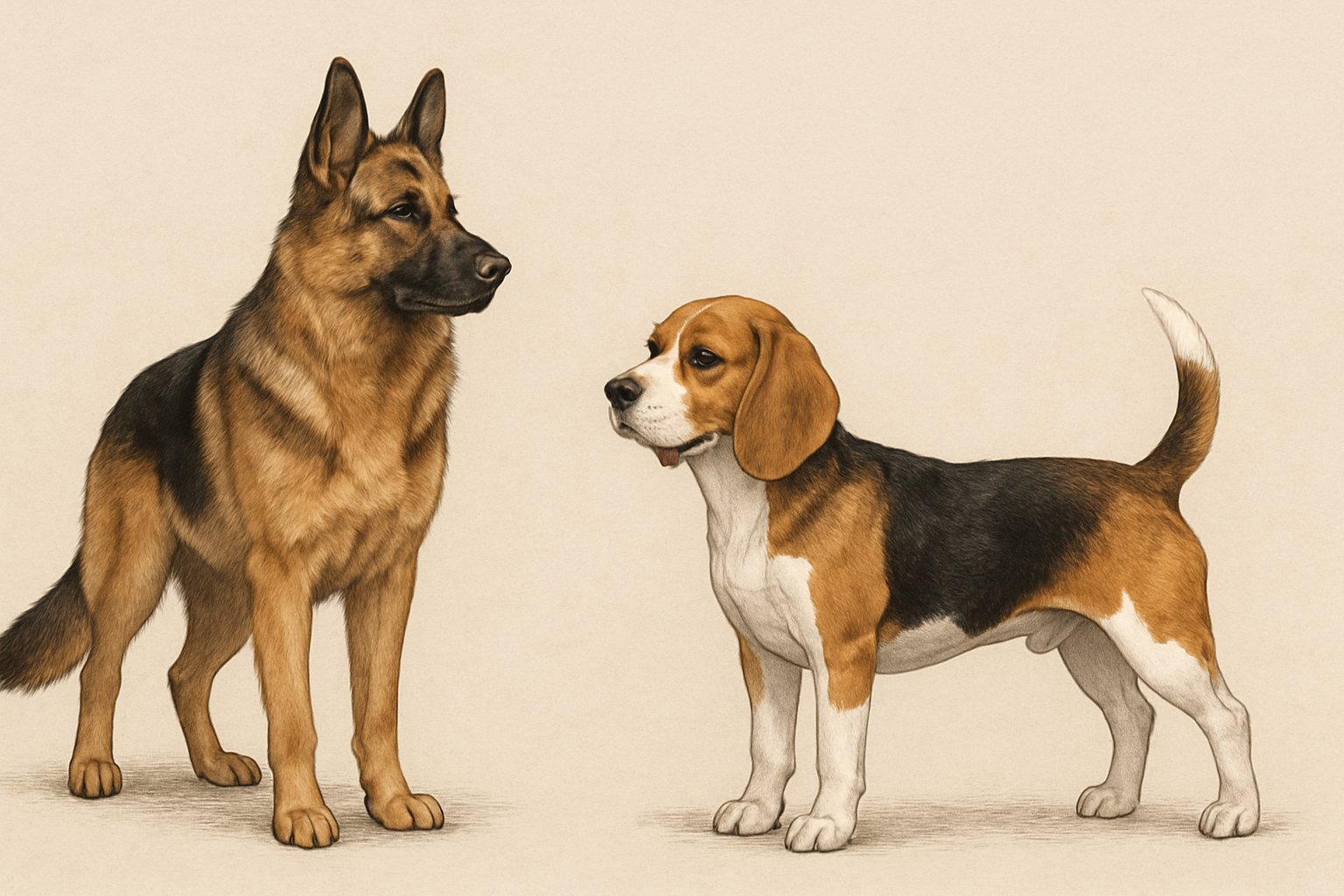
If you want a dog that fits your lifestyle, you’ll need to think about their backgrounds, exercise needs, and health. Here’s a straightforward guide to help you compare them and make a confident decision.
Key Takeaways
- German Shepherds and Beagles each have their own personalities and needs.
- Their care, exercise, and health requirements aren’t the same.
- Picking the right dog really comes down to your lifestyle and what you’re looking for.
Breed Overview and History
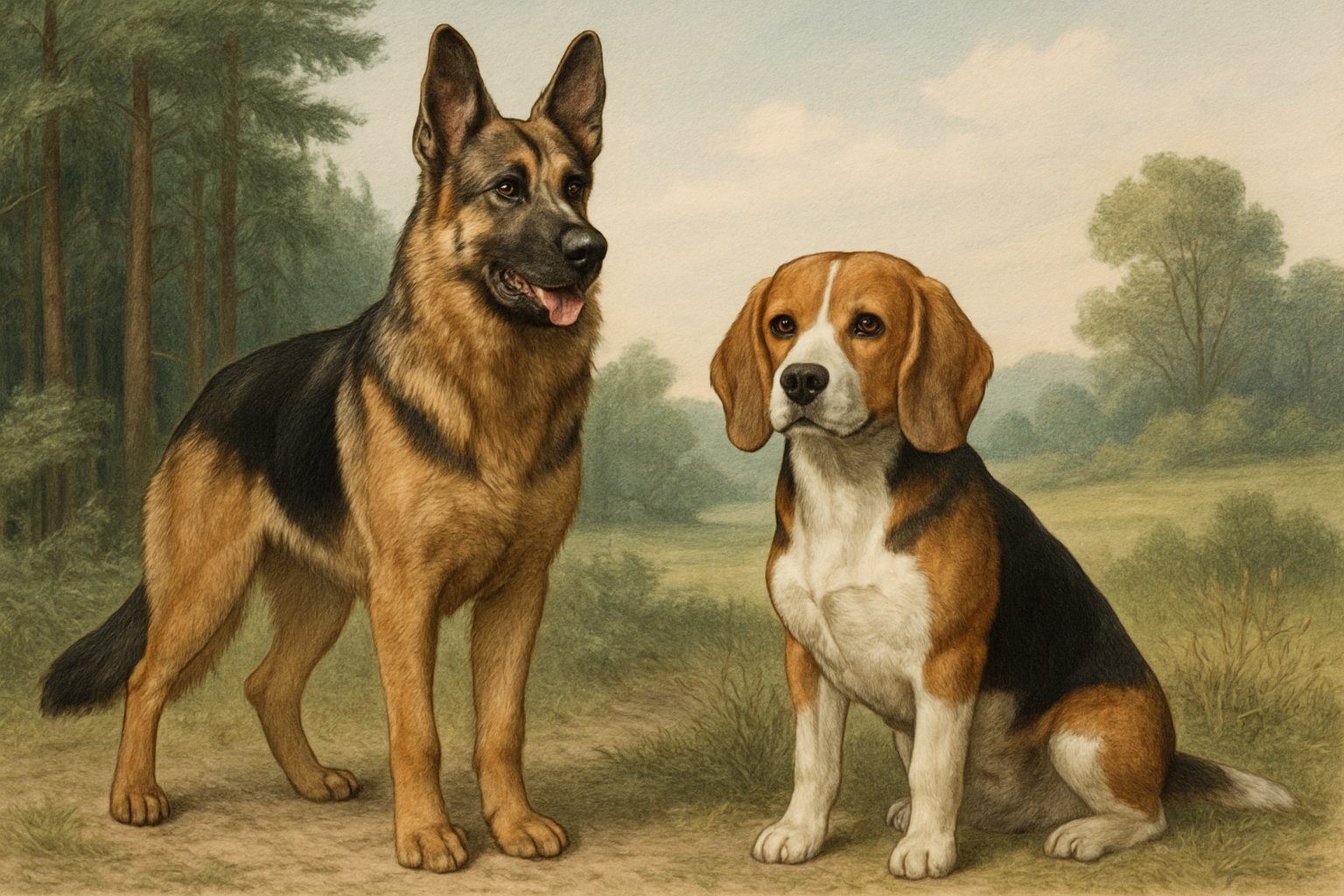
The German Shepherd and Beagle are well-known breeds with pretty different backgrounds. Their long histories have shaped how they look, act, and why people love them.
German Shepherd Origins
The German Shepherd started out as a herding dog in Germany in the late 1800s. Max von Stephanitz, a cavalry captain, wanted a smart, strong dog that could herd sheep. He created the breed using strict standards and careful breeding.
German Shepherds earned a reputation for intelligence, loyalty, and a strong work ethic. People started using them for police work, military roles, and search and rescue.
They have a sharp sense of smell and pick up commands quickly.
Key facts:
- First bred: late 19th century, Germany
- Used for: herding, police, military, search and rescue
- Traits: intelligent, loyal, trainable
You’ll see German Shepherds all over the world now, and in the U.S., they’re a top choice for families and working roles.
Beagle Origins
Beagles are an ancient scent hound breed from England. Their roots go back over 2,000 years, though the Beagle we know today came together in the 1800s. Hunters bred them to track small game, mainly rabbits and hares, because of their amazing noses.
British hunters liked Beagles for their small size—they could keep up with them on foot. Their playful personalities and friendly nature made them favorites as family pets. Beagles also have that classic “bay” bark that helped hunters know when the dog found a scent.
Key facts:
- First bred: Ancient times, England (standardized in the 1800s)
- Used for: hunting small game
- Traits: strong scent, friendly, energetic
These days, Beagles bring a playful, good-natured vibe to families all over the globe.
Recognition by Kennel Clubs
Both the German Shepherd and Beagle are recognized by the American Kennel Club (AKC) and other top dog organizations worldwide. The AKC added Beagles in 1885 and German Shepherds in 1908.
They show up year after year on the AKC’s list of popular dog breeds. German Shepherds often land in the top five, while Beagles are always a hit with families.
AKC Facts Table
| Breed | AKC Recognition Year | Group | Popularity Rank (2024) |
|---|---|---|---|
| German Shepherd | 1908 | Herding | #4 |
| Beagle | 1885 | Hound | #7 |
If you’re thinking about showing your dog or just want a pet that looks and acts like the classic breed, both of these hit the mark.
Physical Characteristics and Appearance
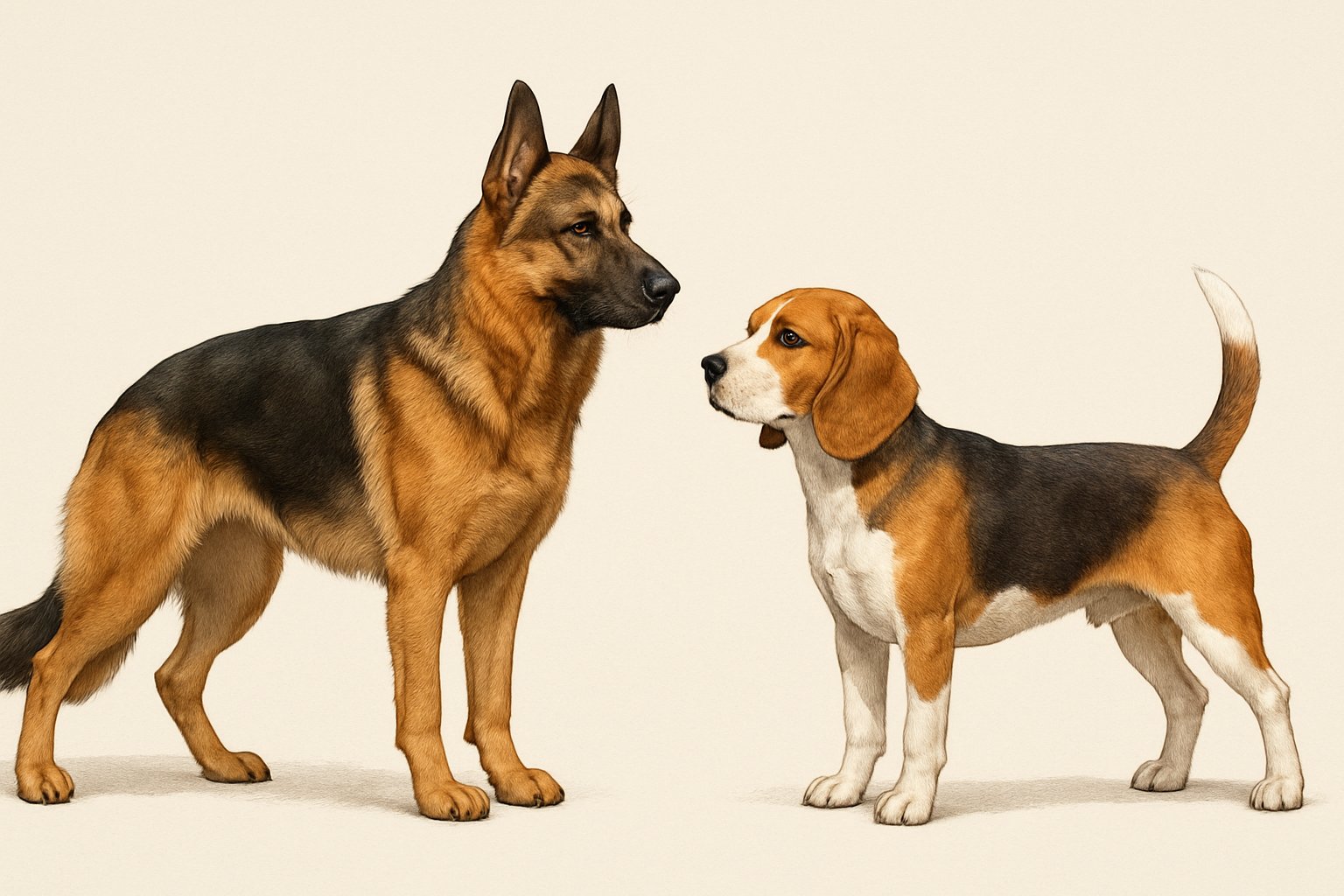
German Shepherds are big and strong with a bold look. Beagles are much smaller, with a softer, friendlier vibe.
You’ll spot the differences in size, coat, color, and those quirky features that make each breed stand out.
Size and Weight Comparison
German Shepherds are definitely on the larger side. Males stand 24–26 inches at the shoulder and weigh 65–90 pounds. Females are a bit smaller, but still pretty sturdy.
Beagles are compact. Adults usually stand 13–15 inches tall and weigh just 20–30 pounds. That smaller size makes them easier to manage and great for smaller homes.
Stack them up against breeds like the Golden Retriever or Labrador Retriever, and German Shepherds match up in height and might even outweigh them. Beagles are a bit bigger than a Chihuahua and smaller than a Boxer.
| Breed | Height (inches) | Weight (pounds) |
|---|---|---|
| German Shepherd | 24–26 | 65–90 |
| Beagle | 13–15 | 20–30 |
| Bulldog | 14–15 | 40–50 |
| Golden Retriever | 21.5–24 | 55–75 |
| Labrador Retriever | 21.5–24.5 | 55–80 |
| Poodle (Std.) | Over 15 | 40–70 |
| Boxer | 21.5–25 | 55–80 |
| Chihuahua | 5–8 | 2–6 |
Coat Type and Color
German Shepherds have a double coat. The top layer is dense and straight, with a softer undercoat underneath. Their fur is medium to long and, wow, does it shed—especially during shedding season. Most are black and tan, but you’ll see solid black, sable, or even white.
Beagles have a short, dense coat that’s pretty low maintenance. Most are tricolor (black, tan, and white), but you’ll also spot lemon and white or red and white. Beagles shed too, but their shorter fur makes it less of a hassle.
Compared to Poodles (curly and low-shedding), both German Shepherds and Beagles shed more and need regular brushing. Bulldogs and Boxers have short coats too, but with more wrinkles or different textures.
Distinctive Features
German Shepherds have a long, straight muzzle, strong jaw, and big, upright ears. Their almond-shaped, dark eyes and bushy tail give them a sharp, alert look.
Beagles come with a rounded skull, a square muzzle, and those classic long, floppy ears. Their big, round eyes make them look gentle and approachable. Their tails curve up and usually have a white tip.
Boxers have a broader head and a shorter nose, and Chihuahuas are tiny with giant ears. Bulldogs have droopy eyes, and Poodles have curly coats. None of them really match the head and ear shapes you’ll see in German Shepherds or Beagles.
Temperament and Personality Traits
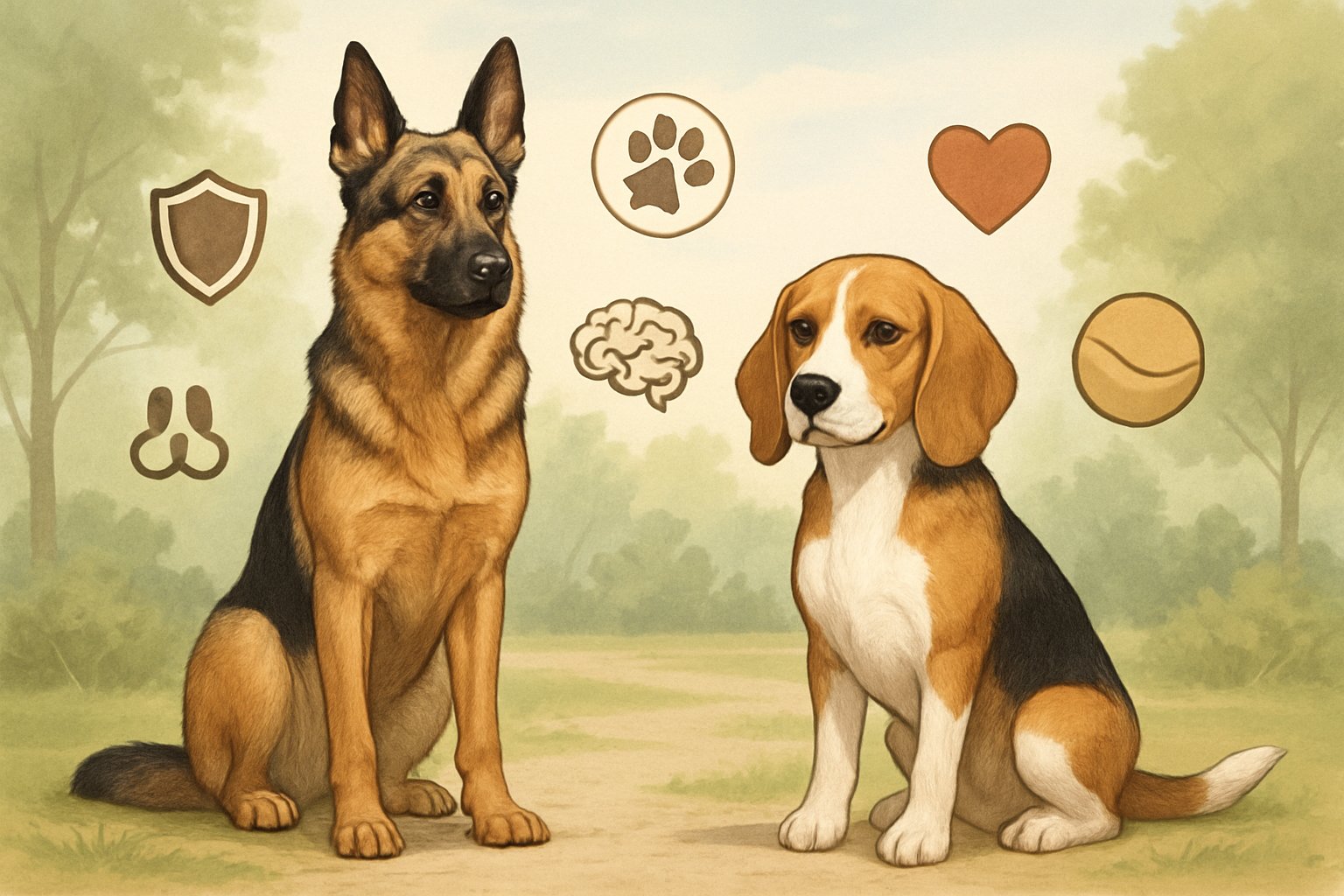
German Shepherds and Beagles act and connect with people in totally different ways. Their personalities really shape how they’ll fit into your life.
German Shepherd Personality
German Shepherds stick by their owners. They’re loyal and protective, and they’ll guard their home if they think there’s a threat.
These dogs are smart, alert, and pick up on commands fast. They like having a job to do and thrive with training and clear rules.
If they don’t get enough mental tasks or structure, they might get bored and act out. Around people they know, they’re usually calm, but they can be suspicious of strangers.
Early socialization helps them relax in new places and with new faces.
Beagle Temperament
Beagles are all about friendliness and curiosity. They’ve got a happy-go-lucky attitude and love hanging out with people.
They’re not as protective as German Shepherds. Instead, they’ll probably wag their tail at strangers.
Beagles are super social and tend to get along with other dogs and pets. They can be stubborn, especially if they catch a scent, but positive reinforcement usually works.
These dogs stay playful and active well into adulthood. Their sense of smell is strong, so if you’re not paying attention, they might wander off after an interesting scent.
If you’ve got kids, a Beagle’s cheerful nature is a plus. Just be ready to train them not to bark or howl too much.
Suitability as Family Pets
German Shepherds:
- Great for active families who can keep up with their exercise and training needs.
- Usually protective of both kids and adults.
- Need careful introductions to strangers and other animals.
Beagles:
- Fit right in with kids thanks to their friendly, patient vibe.
- Usually do well with other pets, even smaller breeds.
- Need a fenced yard—they’ll follow their nose if they get the chance.
Your family’s lifestyle and how much time you have for a dog really matter here.
Role as Companion Dogs
German Shepherds are loyal companions for anyone looking for a steady, protective buddy. They often bond closely with one or two people and need both mental and physical challenges.
Beagles are cheerful and affectionate. They love being part of the action and are easy for most people to get along with.
If you want a dog that’ll look out for you and listen well, a German Shepherd might be the one. If you’re after a lighthearted, friendly dog that gets along with everyone, a Beagle’s a solid pick.
Exercise, Training, and Intelligence
German Shepherds and Beagles both need daily exercise and mental stimulation. Their activity levels and learning styles aren’t quite the same, though.
Exercise Needs
German Shepherds need a lot of activity every day. They’re on par with Border Collies and Dobermans for energy. If you have one, plan for at least 1–2 hours of walks, runs, or playtime daily.
They also do great with agility training or fetch.
Beagles are active, but they don’t need quite as much. About an hour of walking or play is usually enough. Beagles love to sniff around, so long leash walks are perfect.
Both breeds can get into trouble—like barking or digging—if they don’t get enough exercise.
Quick look at typical exercise needs:
| Breed | Daily Exercise Needed |
|---|---|
| German Shepherd | 1–2 hours, high-intensity |
| Beagle | 1 hour, moderate |
Obedience Training
German Shepherds are easy to train. They’re ranked among the most intelligent breeds, right up there with Poodles and Shetland Sheepdogs.
They pick up commands fast and often shine in obedience, police, or service work. Clear rules and consistent training get the best results.
Beagles, though, can be a bit stubborn. Sometimes they just don’t listen right away.
Training a Beagle takes patience and more repetition. Start early, keep sessions short, and use treats as rewards.
Positive reinforcement usually keeps their attention. Still, you might need to repeat yourself a little more than you’d like.
You might notice a few differences:
- German Shepherds respond well to structured commands.
- Beagles tend to get distracted by smells or sounds.
Both breeds do best with daily training and clear expectations.
Mental Stimulation and Enrichment
German Shepherds need activities that challenge their minds. Puzzle toys, scent games, and advanced tricks keep them engaged.
They get bored without enough mental tasks, kind of like Australian Cattle Dogs and Border Collies. It’s not always easy to keep up!
Beagles also love scent-based games and problem-solving tasks. Try hiding treats around the house or yard for them to sniff out.
This taps into their natural hunting instincts. It’s fun to watch them work!
Both breeds need daily mental stimulation to stay happy. Rotate toys, teach new tricks, or try basic agility to shake things up.
Health, Lifespan, and Common Issues
Both German Shepherds and Beagles face specific health risks and need special care. Lifespan and grooming needs aren’t quite the same for each breed.
Typical Lifespan
German Shepherds usually live between 9 and 13 years. Genetic diseases can shorten their lives if you don’t manage them.
Regular checkups and a healthy diet help your dog live longer. It’s worth the effort.
Beagles tend to have a longer lifespan, around 12 to 15 years. They’re hardy dogs but can develop age-related issues, like many smaller breeds such as the Maltese and Shih Tzu.
Smaller dogs like Beagles often outlive larger breeds. For example, Great Danes and Bulldogs usually have shorter lives.
| Breed | Typical Lifespan (years) |
|---|---|
| German Shepherd | 9 – 13 |
| Beagle | 12 – 15 |
| Great Dane | 7 – 10 |
| Bulldogs | 8 – 10 |
| Maltese | 12 – 15 |
| Shih Tzu | 10 – 16 |
Genetic Predispositions
German Shepherds often deal with hip and elbow dysplasia. They can also get degenerative myelopathy, a spinal cord disease.
Allergies and some stomach problems show up, too. It’s not uncommon.
Beagles are at risk for epilepsy, hypothyroidism, and intervertebral disc disease. Their floppy ears make them prone to ear infections.
Like Basset Hounds, Beagles might gain weight if you overfeed them. Both breeds can get allergies, but not as much as breeds like Pugs or Yorkshire Terriers.
Regular vet visits and health screenings matter. If you spot weird symptoms, it’s best to get care quickly.
Grooming and Allergies
German Shepherds have a double coat that sheds all year, with extra fur coming off in spring and fall. Weekly brushing helps control loose hair and cuts down on allergens in your home.
They’re not hypoallergenic and produce more dander than dogs like the Maltese. It’s just something to consider.
Beagles have a short, dense coat that sheds steadily but less than a Shepherd. Brushing once a week usually does the trick.
Beagles can trigger allergies but usually less than heavy shedders. Dogs like Shih Tzu or Yorkshire Terrier might work better for allergy-prone folks since they shed less.
Both breeds need basic care: bathing every few months, ear cleaning, and nail trimming. Clean ears often, especially with Beagles and Basset Hounds, to avoid infections.
Choosing Between a German Shepherd or Beagle
German Shepherds and Beagles are two of the most popular breeds for families and dog lovers. They both make great companion dogs, but they fit different needs, lifestyles, and budgets.
Lifestyle Compatibility
Your daily routine plays a big part in this choice. German Shepherds are active, strong, and need lots of exercise.
They do best with owners who spend time outdoors and want a loyal, protective companion. If you live in an apartment or have a small yard, a German Shepherd might feel cramped or bored.
Beagles are smaller and have a curious personality, kind of like a bloodhound. They love playtime and walks but don’t need as much exercise as a German Shepherd.
Beagles are friendly and get along well with kids and other pets. That makes them a top pick for families.
If you want a dog who’s happy in different home sizes and doesn’t need constant tasks, a Beagle fits well.
Cost and Care Considerations
German Shepherds cost more to care for. They’re big dogs, so they eat a lot and often need extra vet visits for hip and joint issues.
Grooming is another factor. These dogs shed a ton, so you’ll need to brush them regularly.
Beagles, on the other hand, are easier on the wallet when it comes to food. Their smaller size means less to feed.
Their short coat doesn’t need much fuss, but you’ll still see some shedding. Beagle puppies usually have fewer health problems, though purebreds in general can have some genetic quirks.
Cost Comparison Table:
| Expense | German Shepherd | Beagle |
|---|---|---|
| Food (monthly) | High | Low |
| Vet care | Moderate/High | Low/Moderate |
| Grooming needs | High | Low |
| Space required | Large home/yard | Small/medium home |

